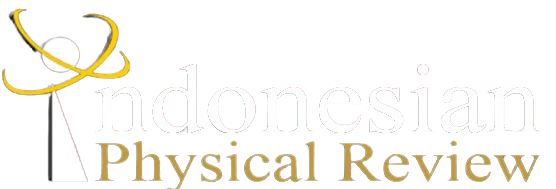APPLYING K-MEANS ALGORITHM FOR CLUSTERING ANALYSIS EARTHQUAKES DATA IN WEST NUSA TENGGARA PROVINCE
DOI:
10.29303/ipr.v5i3.148Downloads
Abstract
This study aims to cluster and visualize the earthquake data on a geographical map to determine earthquakes' characteristics using the k-means algorithm. Cluster analysis using the k-means algorithm was carried out on the earthquake data. K-means algorithm is familiar and is one of the well-known techniques to have been applied in cluster analysis. One of Its advantages in cluster analysis is scaling large datasets, for example, earthquake data. The data used in this study is earthquake data in the West Nusa Tenggara from 1991 to 2021. Applying the proposed k-means algorithm, the optimal number of clusters (k) used in this clustering is 2, based on the highest silhouette score of 0.749. The cluster analysis on the geographical map showed that the epicenters of the earthquakes were pretty spread out before 2018, and the number of earthquakes in the eastern region of West Nusa Tenggara is more than in the western area. However, in 2018, the clusters were all bunched in the northern Lombok region. There were a few earthquakes in the west region in 2018, but they happened before August 5. Even after 2019, most earthquakes continue to occur, with the epicenters clustered close to the northern Lombok region ÂKeywords:
K-means, Clustering, Earthquakes, West Nusa TenggaraReferences
Hsieh, T., & Chen, C. (2010). Visualizing Field-Measured Seismic Data. 65–72.
Bao, Z.; Zhao, J.; Huang, P. ., & Yong, S.; Wang, X. (2021). A Deep Learning-Based Electromagnetic Signal for Earthquake Magnitude Prediction. 21, 4434.
Novianti, P., Setyorini, D., & Rafflesia, U. (2017). K-Means cluster analysis in earthquake epicenter clustering. 3(2), 81–89. https://doi.org/http://dx.doi.org/10.26555/ijain.v3i2.100
Wattimanela, H. J. (2019). Grouping of Tectonic Earthquakes in the Province of Nusa Tenggara Barat Indonesia with K-Means Cluster Method Approach and Determination of Distribution Type. 2(3), 177–191. https://doi.org/https://doi.org/10.30598/SNVol2Iss3pp177-191year2019
Harini, S., Fahmi, H., D. Mulyanto, A., & Khudzaifah, M. (2020). The earthquake events and impacts mapping in Bali and Nusa Tenggara using a clustering method The earthquake events and impacts mapping in Bali and Nusa Tenggara using a clustering method. https://doi.org/10.1088/1755-1315/456/1/012087
Weatherill, G., Burton, P. W., & Burton, W. (2009). Delineation of shallow seismic source zones using K -means cluster analysis , with application to the Aegean region. 565–588. https://doi.org/10.1111/j.1365-246X.2008.03997.x
Rifa, I. H., Pratiwi, H., Sciences, N., & Maret, U. S. (2020). Clustering of earthquake risk in indonesia using k-medoids and k-means algorithms. 13(2), 194–205. https://doi.org/10.14710/medstat.13.1.194-205
Jufriansah, A., Pramudya, Y., Khusnani, A., & Saputra, S. (2021). Analysis of Earthquake Activity in Indonesia by Clustering Method. 5(2), 92–103. https://doi.org/10.20961/jphystheor-appl.v5i2.59133
Supriyadi, Bambang., Windarto, Agus Perdana., Soemartono, Triyuni., U. (2018). Classification of Natural Disaster Prone Areas in Indonesia using K-. International Journal of Grid and Distributed Computing, 87–98. https://doi.org/http://dx.doi.org/10.14257/ijgdc.2018.11.8.08
Ricardo, J. E., Juan, J., Menéndez, D., Manuel, J., Bermúdez, M., Lemus, N. M., … Barcos, I. F. (2021). Neutrosophic Sets and Systems Neutrosophic K-means for the analysis of earthquake data in Ecuador Neutrosophic K-means for the analysis of earthquake data in Ecuador. 44.
Kuyuk, H. S., Yildirim, E., Dogan, E., & Horasan, G. (2012). Nonlinear Processes in Geophysics Application of k -means and Gaussian mixture model for classification of seismic activities in Istanbul. 411–419. https://doi.org/10.5194/npg-19-411-2012
Ji, K., Wen, R., Ren, Y., & Dhakal, Y. P. (2018). Nonlinear seismic site response classification using K-means clustering algorithm: Case study of the September 6, 2018 Mw6.6 Hokkaido Iburi-Tobu earthquake, Japan. Soil Dynamics and Earthquake Engineering. https://doi.org/https://doi.org/10.1016/j.soildyn.2019.105907
Swamynathan, M. (2017). Mastering Machine Learning with Python in Six Steps. Bangalore, Karnataka, India: Apress Media.
Shalev-Shwartz, Shai.Ben-David, S. (2014). Understanding Machine Learning : From Theory to Algorithms. New York, The United States of America: Cambridge University Press.
Cui, M. (2020). Introduction to the K-Means Clustering Algorithm Based on the Elbow Method Mengyao. 5–8. https://doi.org/10.23977/accaf.2020.010102
USGS. (2022). Search Earthquake Catalog. Available online from: https://earthquake.usgs.gov/earthquakes/search/. [Accessed March 22, 2022].
License

This work is licensed under a Creative Commons Attribution-NonCommercial-ShareAlike 4.0 International License.
Authors who publish with Indonesian Physical Review Journal, agree to the following terms:
- Authors retain copyright and grant the journal right of first publication with the work simultaneously licensed under a Creative Commons Attribution-ShareAlike 4.0 International Licence (CC BY SA-4.0). This license allows authors to use all articles, data sets, graphics, and appendices in data mining applications, search engines, web sites, blogs, and other platforms by providing an appropriate reference. The journal allows the author(s) to hold the copyright without restrictions and will retain publishing rights without restrictions.
- Authors are able to enter into separate, additional contractual arrangements for the non-exclusive distribution of the journal's published version of the work (e.g., post it to an institutional repository or publish it in a book), with an acknowledgment of its initial publication in Indonesian Physical Review Journal.
- Authors are permitted and encouraged to post their work online (e.g., in institutional repositories or on their website) prior to and during the submission process, as it can lead to productive exchanges, as well as earlier and greater citation of published work (See The Effect of Open Access).





